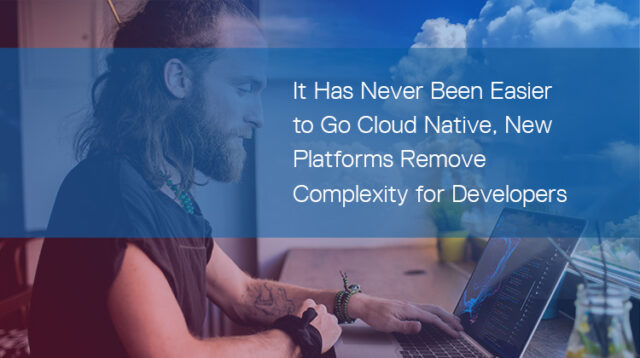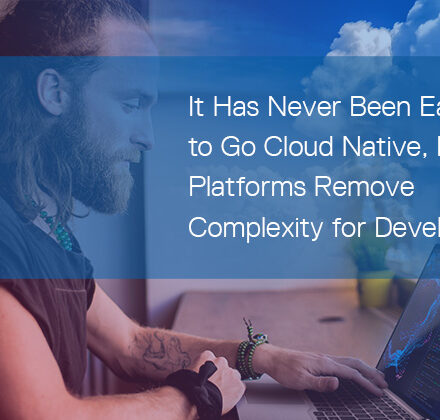Giving developers simplicity, flexibility and speed in creating, deploying and managing cloud-enabled applications to dramatically increase velocity and meet changing business needs is crucial to today’s fast-paced IT organizations. In fact, app modernization has become a top priority for today’s enterprise executives.
It is a trend that is driven by the rise of cloud technologies, the resulting push to abstract apps from the infrastructure they use, and the evolution of modern cloud native platforms to standardize and simplify the development process for faster time to market.
In our ongoing app rationalization, Dell Digital, Dell’s IT organization, is embracing an expanded portfolio of cloud native platforms for app modernization from VMware Tanzu that not only helps developers maximize cloud capabilities but also removes complexity from the development process while increasing automation and efficiency.
Breaking Down The Monoliths
A key part of Dell IT’s app modernization strategy, and of those across the industry, has been to build applications in microservices—components defined with smaller chunks of code—rather than traditional monolithic, large blocks of code. The industry standard for architecture to run applications efficiently in a multi-cloud model is microservices with a cloud native approach. Cloud native is an architectural principle that helps IT developers write applications in a way that maximizes the use of cloud environments where tight coupling of applications to underlying infrastructure is eliminated.
At Dell Digital, we began our modernization effort with a small implementation of a groundbreaking cloud native platform called Pivotal Cloud Foundry, now VMware Tanzu Application Service. Four years and some 7,500 microservices later, we have deployed Tanzu app modernization platforms across six data centers to give developers an all-in-one platform to host modern cloud native apps.
Tanzu Application Service provides a turnkey cloud-native framework that offers the most automated, most self-healing and most efficient lifecycle management features for both public cloud and on-premise workloads. It allows for seamless upgrades of the technology stack below hosted applications so that our services are always able to benefit from the latest features without having to cope with long, labor-intensive outage windows for upgrades typically associated with legacy infrastructure.
With Tanzu, developers can build microservices by selecting the platform they want with ready-to-use infrastructure. They don’t have to go through multiple infrastructure teams to get what they need. For example, they don’t have to wait for IT to provision a virtual machine. They create the logic, bundle it as a microservice and use Tanzu to run the new service, reducing the creation and deployment time from what was typically six months to merely a few weeks, or less.
The abstraction of applications from the infrastructure they use means developers don’t have to worry about underlying technology or capacity. If they want to scale a workload, they can go into a command line in Tanzu and add resources or instances without worrying about what takes place behind the scenes. They can even go one step further and configure auto-scaling to let the platform dynamically adjust the application instance count based on metrics thresholds such as CPU usage.
More Flexibility With Kubernetes
The Tanzu portfolio also allows developers to run their apps using Tanzu Kubernetes Grid, formerly known as Pivotal Container Service (PKS). This option facilitates a lift-and-shift approach yet still offers cloud enablement features like self-healing and enhanced flexibility. Tanzu Kubernetes Grid automates the delivery of containerized workloads.
Developers retain more choices in deploying their app via Tanzu Kubernetes Grid, such as selecting infrastructure components and how they fit together as well as exposing load balancing and attaching storage. Container orchestration is for the developer that wants some cloud features but also wants the flexibility to fine-tune the underlying infrastructure the way they want to.
Once apps are built, Tanzu platforms provide the flexibility to move them across multiple cloud environments without rewriting them. From your on-prem cloud to the public cloud and back again, the app stays the same. You just deploy it to a cloud and boom, it starts working with very minor or no modifications.
Overall, the Tanzu portfolio not only enables faster time to market, it also provides operational efficiency, increased reliability and ease of management of the application infrastructure.
It’s all about enabling developers to concentrate on what they do best: build great apps. Developers can now focus more on innovation and rapidly getting their apps in front of the customers where they provide value, rather than spending time building core platform and infrastructure. Going cloud native has never been easier.
Be sure to check out a presentation by Raj Markala and Ashok Muthukrishnan, Director, Software Engineer, on Dell IT: Accelerating App Modernization with VMware Tanzu, This session was presented at the Dell Technologies World Experience October, 2020.
Find out more about how Dell is reimaging how IT does business at Dell Technologies: Our Digital Transformation.



